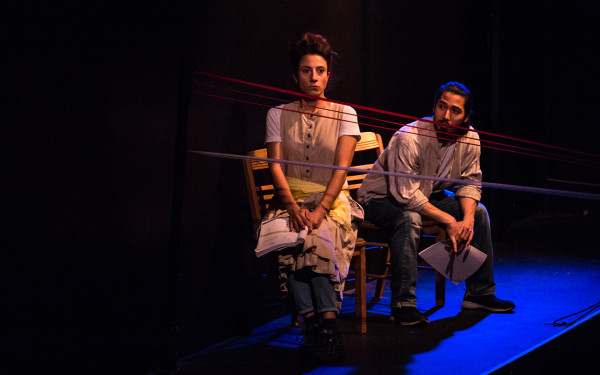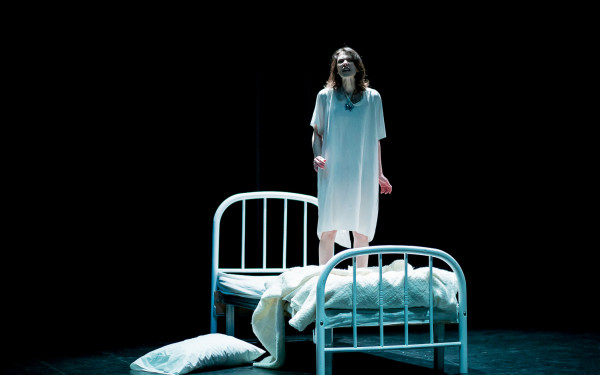Theatre Review: Smackhead Brings the Issues of Addiction and Mortality to the Stage
We Are One Prioritizes Strong Roles for Women in Theatre
“You ever try smack?”
The theatre space is filled with anticipation and energy. The lights in the cramped room are dim. The floor is made of dark cement, smelling faintly of smoke and is split in half. On the left side are the performers, to the right are the spectators.
The room’s atmosphere is immersive, warm, and could be inviting or unsettling, depending on the person. Wherever the actors step is, decidedly, the stage. There is no separation between the audience and the story-telling.
In some scenes, the actors get so close that you can feel their breath, and smell their fruity shampoo.
We Are One, a female-run theatre company, presents the play Smackhead written by Nastasia Pappas-Kemps. The company aims to encourage women to play diverse, challenging, and strong characters.
Completely immersive, staged in a room that could have been confused for someone’s actual apartment, the venue known as The Free Standing Room was easy to miss, but worth the momentary confusion.
The play follows the story of a recovering heroin addict named Ramona, portrayed by Cleopatra Boudreau. With soft, curly hair, she bubbles over with kindness on a good day when she’s clean. Currently completing her residency as a pediatric nurse all while trying to hide her shaking hands.
She is a visionary who wants to pass a bill to ban morphine from hospitals across Canada, starting with the institution she is working at: the Sick Kids hospital in Toronto. At the hospital, Ramona is a nurse to a teenaged cancer patient who is battling uterine cancer named Faith, played by Skyler Clark.
“Heroin is easy, it’s soft like flour,” breathed Ramona.
In the middle of the theatre space is a hospital room complete with flowers and an IV stand. There is a small sheet separating Faith’s hospital room to an apartment, staged with a covered couch and a video camera.
Ramona and her drug dealer turned boyfriend, Max Foster played by Simon Pelletier, are sitting on the raggedy couch together. Whenever the two are in the same room, there is so much passion. A relationship built on addiction, leading to an intense love affair: they are nothing but destructive for each other. Whether they are in love with each other or the drug is up for the audience to decide.
Dreamers are magnets to other dreamers—Ramona quickly befriends her patient Faith. Obliterating the professional barrier, she comes to deeply care about her patient without even noticing.
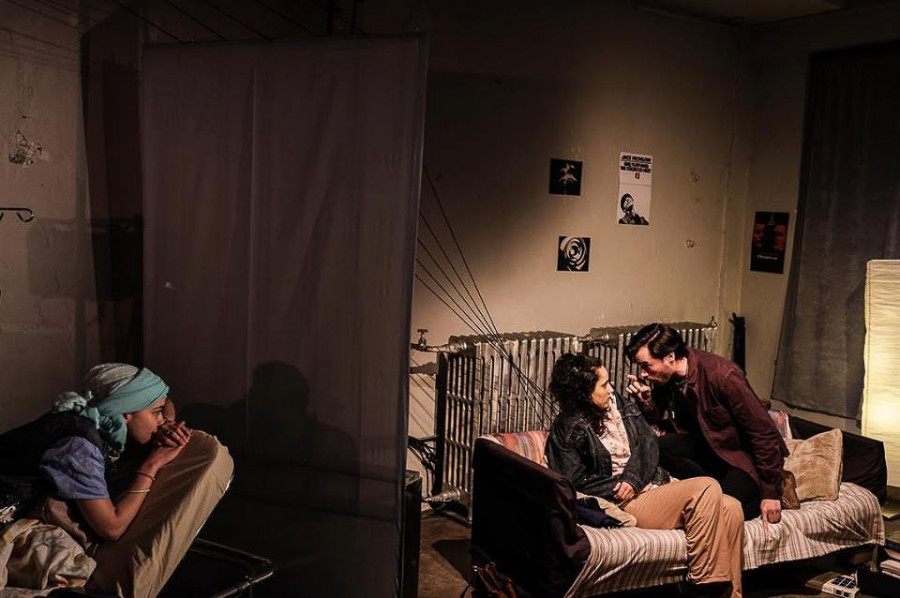
Firey, sarcastic, and energetic, Faith has a cute crooked smile, and shining eyes, always dancing with mischief, despite her all-consuming fear of being forgotten.
Her costume alone depicts her personality without her even having to say a word. Dressed in a studded jean jacket over her hospital gown, she wears fluffy pink slippers and a teal scarf on her head.
She desperately wants to make a movie recreating the famous musical Singin’ in the Rain, and Ramona, who has a history of filmmaking, is the one she forcibly chose to help her with it.
“When I die, my life just stops. It’s like I’m looking into an abyss of colors,” Faith said. “I need to leave some of my own color before I leave entirely.”
Faith acts as a catalyst toward Ramona’s real recovery, of her addiction to heroin and her fractured relationship with Max.
Something in Faith struck a vein with Ramona, hurtling her back and forth between memories of when she first started using smack back in high school and the harsh realities of the present.
This is depicted as scenes in the play are seemingly haphazardly thrown together, to superimpose images from her past with Max, and her present with Faith.
Going from a violent, erratic scene of tears and screaming, to the subdued environment of a hospital room, the play is alive with energy and emotion.
“At this point, the only things I’ll miss when I die are the things that haven’t happened yet,” said Faith. “Once you die, it’s not about me anymore. My body is just a flesh suit.”
It’s as if some of the scenes stuck with me long after I left the venue. When Faith had her episode, those screams continued to ring in my ears long after the end of the show.
Faith’s screams filled the venue, the lights flickered and there was nothing but those shrieks of agony and painful hyperventilation. It grated on every one of my senses. My body tensed.
“TEN! TEN! IT’S A FUCKING TEN!” Faith cried. The room was white, and raw, and in a flurry of panic. It was painful watching her writhe in her hospital gown.
The show is filled with rawness and harsh reality, with themes of mortality, self realization, and the consuming desperation that comes with battling an addiction.

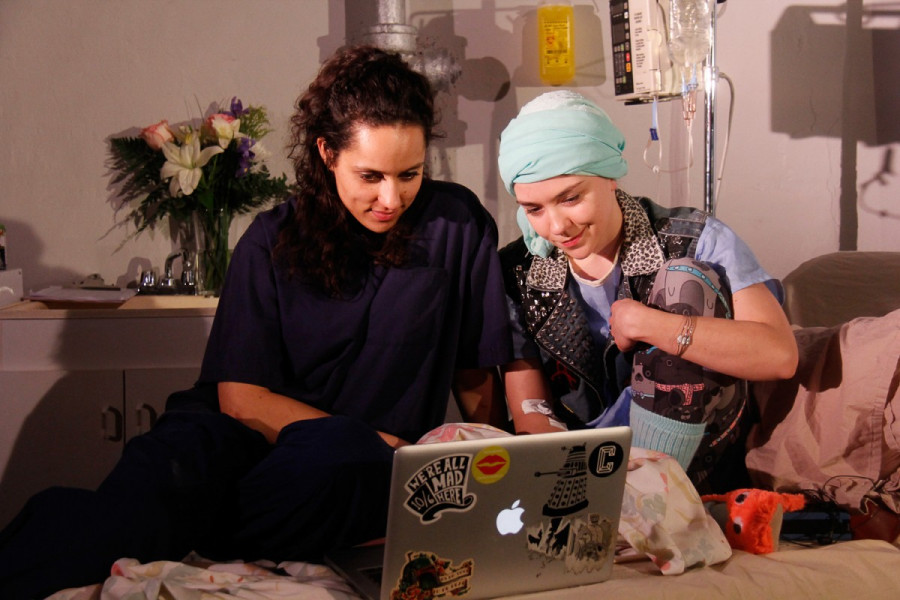
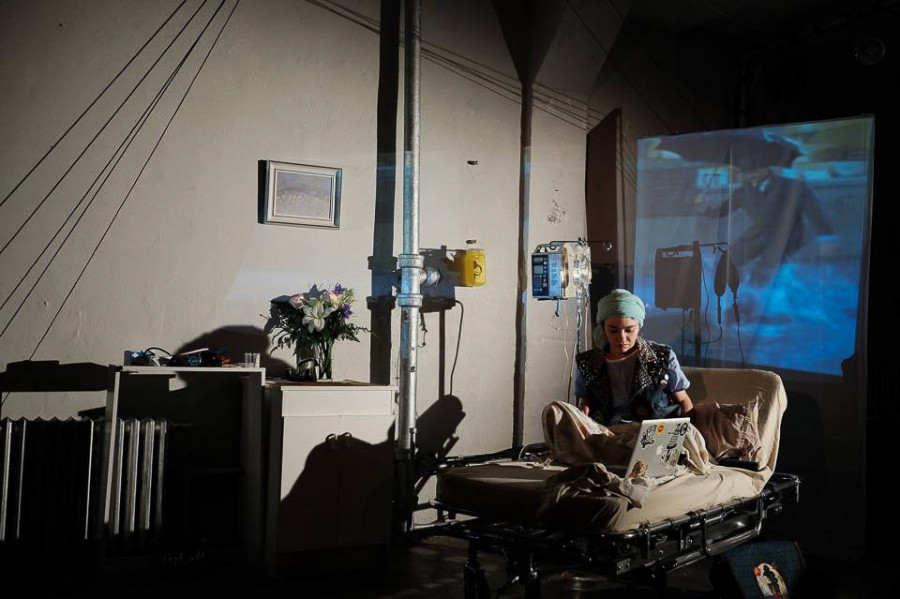
_600_832_s.png)

